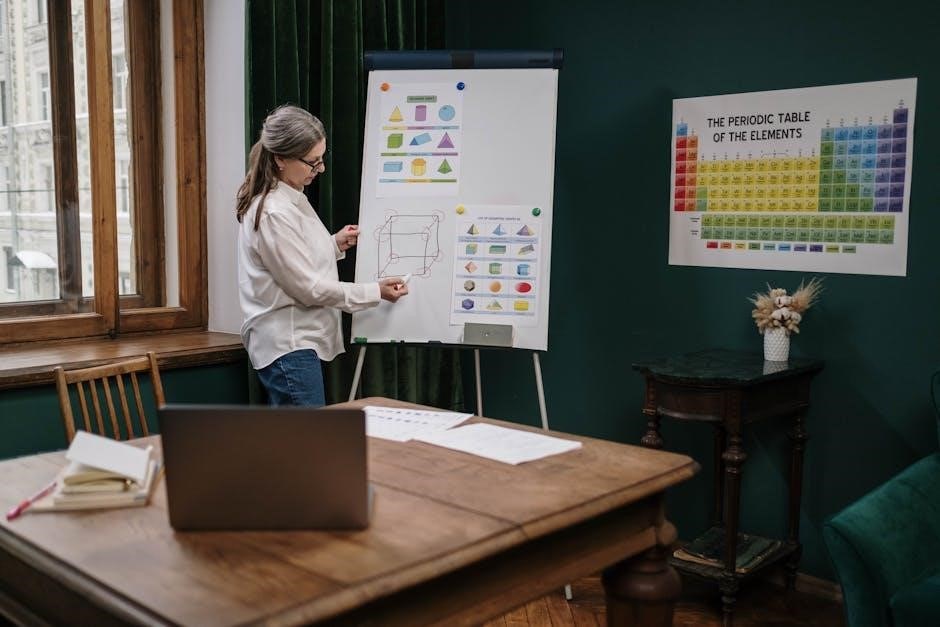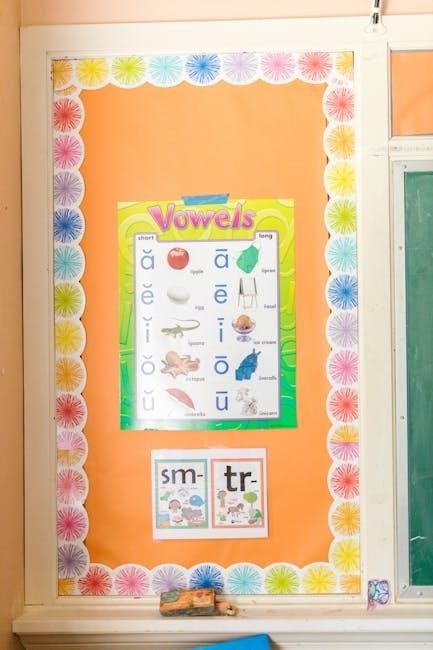The study guide provides an overview of substitution methods, including intervention substitution, with relevant examples and exercises to help students understand the concepts and apply them to real-world problems effectively always․
Overview of the Study Guide
The study guide is designed to provide students with a comprehensive understanding of substitution methods, including intervention substitution, and their applications in various fields․ The guide covers a range of topics, from the basics of substitution to more advanced concepts, and includes numerous examples and exercises to help students reinforce their learning․ According to researchers, such as LK Shaidukova, the study of substitution methods is essential in today’s technology-driven world․ The guide is divided into sections, each focusing on a specific aspect of substitution, and includes references to relevant studies and research papers, such as DG Shefer’s work on surgical treatment and long-term substitution therapy․ By working through the guide, students will gain a deeper understanding of substitution methods and be able to apply them to real-world problems, making it a valuable resource for those studying mathematics, therapy, and other related fields, with many benefits and applications․

Substitution in Mathematics
Mathematics involves substitution methods, including algebraic equations and formulas, to solve problems and model real-world situations effectively always with specific rules․
Understanding Substitution Method
The substitution method is a technique used to solve systems of equations, where one variable is expressed in terms of another․ This method involves substituting an expression for one variable into an equation, allowing for the solution of the system․ According to various studies, including those by LK Shaidukova and DG Shefer, substitution methods have been applied in different fields, including mathematics and therapy․ The substitution method can be used to solve linear equations, quadratic equations, and other types of equations․ It is an important tool in algebra and is used to model real-world situations․ The method involves isolating one variable and substituting it into another equation, allowing for the solution of the system․ By using the substitution method, students can develop problem-solving skills and learn to apply mathematical concepts to real-world problems․ The guide covers the substitution method in detail, providing examples and exercises to help students understand the concept․

Intervention Substitution in Therapy
Therapy uses intervention substitution methods, including substitution therapy, to yield positive therapeutic results always effectively․
Therapeutic Results of Substitution Therapy
The therapeutic results of substitution therapy have been studied extensively, with researchers examining the effectiveness of this approach in various contexts․ According to studies, substitution therapy can yield positive therapeutic results, including improved outcomes and increased patient satisfaction․ The use of substitution therapy has been shown to be particularly effective in certain populations, such as those with specific mental health conditions․ Additionally, researchers have identified key factors that contribute to the success of substitution therapy, including the type of substitution method used and the level of patient engagement․ By examining the therapeutic results of substitution therapy, researchers can better understand how to optimize this approach and improve patient outcomes․ Overall, the therapeutic results of substitution therapy are a critical area of study, with important implications for the development of effective treatments․ The study of therapeutic results is ongoing, with new research emerging regularly to inform practice․

Benefits and Drawbacks of Substitution Methods
Substitution methods have various benefits and drawbacks, including advantages and limitations, which are important to consider when evaluating their effectiveness always and carefully in different situations and contexts․
Evaluating the Effectiveness of Substitution Methods
Evaluating the effectiveness of substitution methods is crucial in understanding their impact on various problems․ The study guide provides a framework for evaluating the effectiveness of substitution methods, including intervention substitution․ This involves analyzing the results of substitution therapy, as mentioned by DG Shefer, and considering the benefits and drawbacks of substitution methods․ The Picture Naming Test, discussed by OI Morkovina, can also be used to evaluate the effectiveness of substitution methods in certain contexts․ Additionally, the therapeutic efficacy and safety of anticonvulsant generics, studied by ЕА Ушкалова, can provide valuable insights into the effectiveness of substitution methods․ By considering these factors, individuals can make informed decisions about the use of substitution methods in different situations․ The evaluation process involves careful consideration of various factors, including the context, the problem being addressed, and the potential outcomes of substitution methods․ This helps to ensure that substitution methods are used effectively and efficiently․

Application of Substitution in Real-World Problems
Substitution methods are applied in various real-world problems, including mathematical and therapeutic contexts, to solve complex issues effectively always using different strategies․
Using Substitution to Solve Real-World Problems
The process of using substitution to solve real-world problems involves identifying the variables and constants in the problem, and then applying the substitution method to simplify the equation․ This can be seen in mathematical contexts, such as solving linear equations and formulas, as well as in therapeutic contexts, such as intervention substitution therapy․ The guide provides examples and exercises to help students understand how to apply substitution methods to real-world problems, including word problems and inequalities․ By using substitution, individuals can break down complex problems into simpler components, making it easier to solve them․ The application of substitution methods can be seen in various fields, including mathematics, science, and social work․ The use of substitution methods can help individuals develop problem-solving skills and critical thinking․ Overall, the substitution method is a valuable tool for solving real-world problems, and its application can be seen in various contexts․


